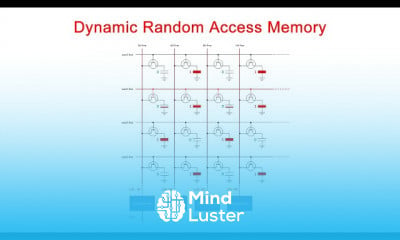Bitwise Operators 1 The AND Operation
Share your inquiries now with community members
Click Here
Sign up Now
Lessons List | 4
Lesson
Comments
Related Courses in Computer Science
Course Description
What is Bitwise operator?
Bitwise operators are used to change individual bits in an operand. A single byte of computer memory-when viewed as 8 bits-can signify the true/false status of 8 flags because each bit can be used as a boolean variable that can hold one of two values: true or false. Are Bitwise Operators faster?
Bitwise operations are incredibly simple and thus usually faster than arithmetic operations. For example to get the green portion of an rgb value, the arithmetic approach is (rgb / 256) % 256 . With bitwise operations you would do something as (rgb >> 8) & 0xFF.Why do we need Bitwise Operators?
Bitwise operators are a great way to make very efficient use of space when representing data. ... Typically, integers are 32 bits, so this would mean sending back 64 bits of data. However, we can make this much more space-efficient by using bitwise operators. Why use Bitwise operators in C?
BITWISE OPERATORS are used for manipulating data at the bit level, also called bit level programming. Bitwise operates on one or more bit patterns or binary numerals at the level of their individual bits. They are used in numerical computations to make the calculationWhat is Bitwise exclusive or?
The bitwise exclusive OR operator ( ^ ) compares each bit of its first operand to the corresponding bit of its second operand. If the bit in one of the operands is 0 and the bit in the other operand is 1, the corresponding result bit is set to 1. Otherwise, the corresponding result bit is set to 0
Trends
MS Excel
Resize Images In Photoshop
Create mobile apps
French
Learning English Speaking
Figma design tools
Python for beginners
Chemistry
Human Resources Management
YouTube channel setup
Build a profitable trading
AI SaaS for beginners
UX design career in 2025
Web Design for Beginners
Digital Marketing From Scratch
Marketing basics for beginners
Create Animals icon in figma
ArrayLists in C for beginners
Experimental Biotechnology
Create a warning icon in figma
Recent
Webflow for beginners
Graphic design tools for beginners
Customizing type for logos
E Commerce web design
Make Scrollable Prototypes in figma
Advanced Logo design methods
ChatGPT for designers
Essential skills for web designers
Framer basics for beginners
Figma components and variants
macOS app development basics
Testing in iOS fundamentals
Figma fast design techniques
Build a tic tac Toe app in Xcode
Xcode UI design for beginners
Mobile app development
Making money with apps
SwiftUI components for beginners
Make an app from scratch
Cursor aI for iOS development


















